Pahari painting in the 17th and 18th centuries, the focus of this exhibition, presented the Hindu gods in a variety of novel ways, providing royal patrons in the Punjab with new contexts in which to frame their relationship to divinity. Find out more about ‘Seeing the Divine’ from the Met’s website.
Preview the exhibition below | See Apollo’s Picks of the Week here
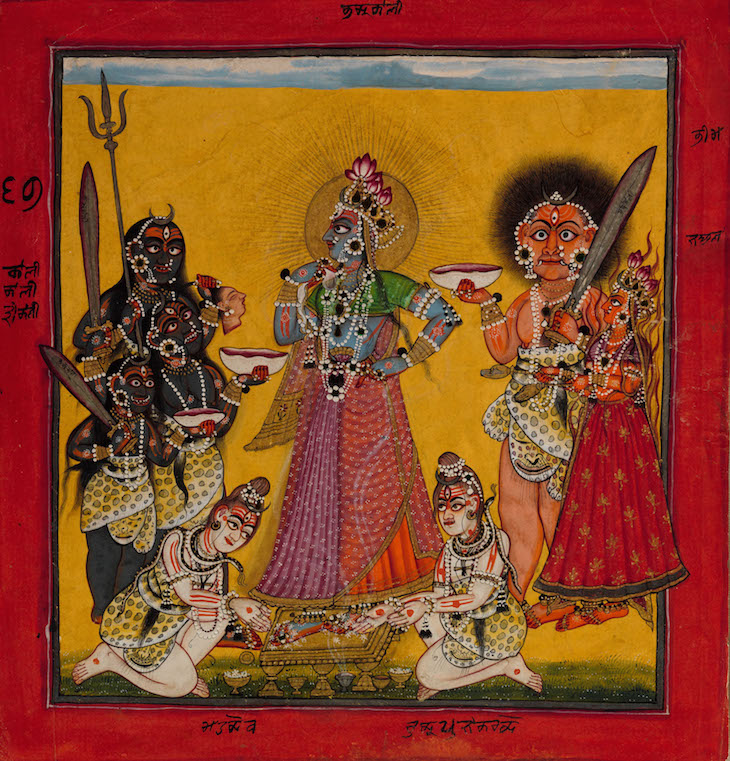
Devi in the Form of Bhadrakali Adored by the Gods (c. 1660–70), attributed to the Master of the Early Rasamanjari. Metropolitan Museum of Art, New York
This picture comes from the series, which once comprised some 70 paintings, believed to be the earliest example of pahari painting – literally, ‘painting from the Punjab Hills’. It depicts Devi, also known as the Great Goddess, from whom Shiva, Vishnu and Brahma are believed to derive their energy. Each painting in the series depicted the goddess in one of her various incarnations; in this case, she is shown in the form of Bhadrakali, identified by her ritual marks and appendages. Among the various male gods surrounding her in worship is her consort, Shiva, who kneels at her feet.

Varaha, The Boar Incarnation of Vishnu (c. 1775–80), Punjab Hills, kingdom of Kangra or Guler. Metropolitan Museum of Art, New York
In his third incarnation, the god Vishnu descended to earth as a boar, in order to defeat the demon Hiranyaksha – shown in this image lying vanquished, while Vishnu lifts the earth above the swirling waters with his tusk. The painting once formed part of a folio illustrating the 12th-century poem known as the Gita Govinda, or Song of God.
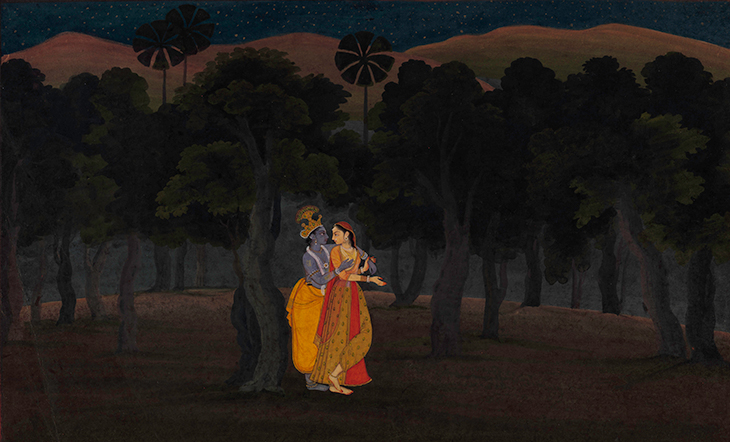
Radha and Krishna walking at night (c. 1775–80), Punjab Hills, kingdom of Kangra or Guler. Metropolitan Museum of Art, New York
From the same folio as the previous image, this painting illustrates a popular mythological scene of the lovers Krishna and the gopi (milkmaid) Radha. They walk together at dusk, looking into each others’ eyes, while the stars emerge behind them. In the Gita Govinda, Krishna and Radha are depicted as eternal consorts, whose love is symbolic of the broader relationship between humanity and god.
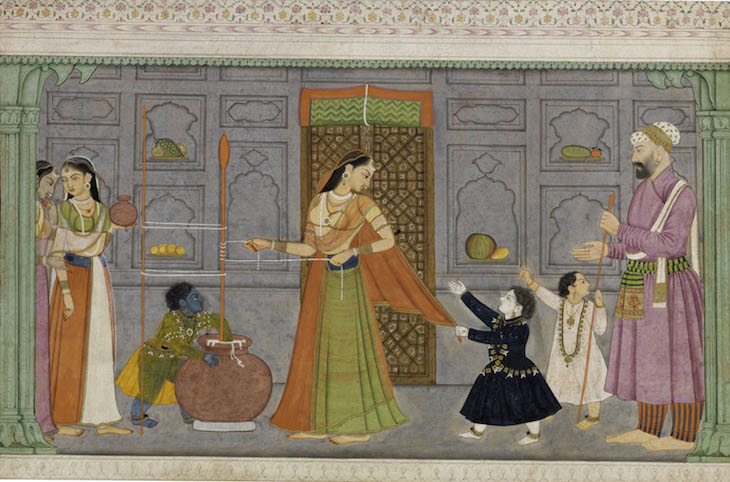
Krishna as a Child Stealing Buttermilk (c. 1780), Punjab Hills, kingdom of Kangra or Guler. Metropolitan Museum of Art, New York
This painting depicts the popular story of the young, mischievous Krishna and his older brother, Balarama, stealing buttermilk from the family of cowherds among whom he grew up in the northern region of Braj. The exhibition argues that such paintings provided the patrons who commissioned them with a new means of visualising their relationship with divinity, as the gods were presented variously as naughty children, compassionate lovers, and powerful protectors.



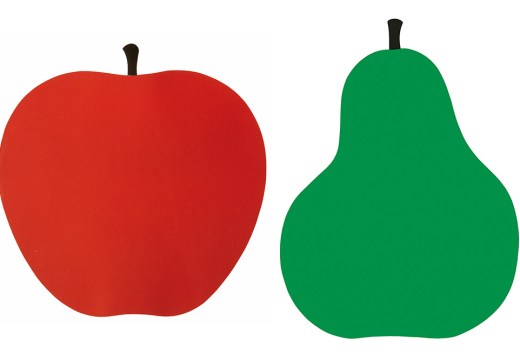
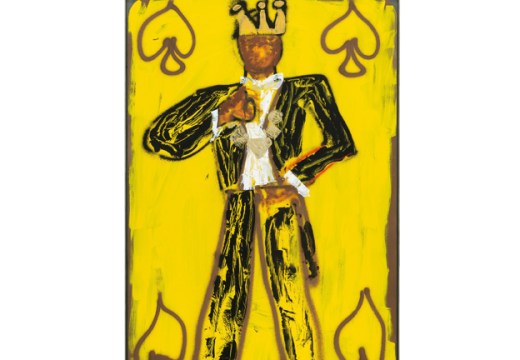






![Masterpiece [Re]discovery 2022. Photo: Ben Fisher Photography, courtesy of Masterpiece London](http://www.apollo-magazine.com/wp-content/uploads/2022/07/MPL2022_4263.jpg)
Has the Fitzwilliam lost the hang of things?